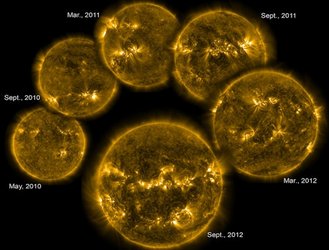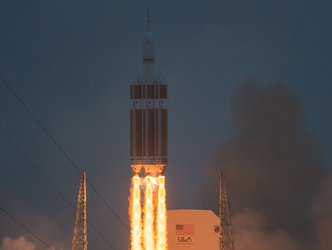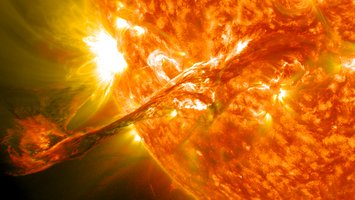
Over the last 10 years we have been combining spectroscopic observations of stellar cycles from the Nordic Optical Telescope with asteroseismic observations of stellar variability from the Kepler mission (Karoff et al. 2009, MNRAS, 399, 914 and Karoff et al. 2013, MNRAS, 433, 3227). As the Kepler mission only lasted four years, it is in general not possible to use the Kepler observations for studying stellar cycles. One exception is the Sun-like stars HD 173701 where 40 years of ground-based observations made it possible to identify a cycles similar to the 11-year solar cycle (Karoff et al. 2018, ApJ, 852, 46)
As the moment we are testing a new spectrograph dedicated for studying chromospheric activity in Sun-like star with SONG. The so-called Blue Spectrograph. If successful this spectrograph will allow us to use the next decades to identify stellar cycles in many of the Sun-like stars of which we have accurate asteroseismic determined stellar parameters from Kepler.
Another big project is to use asteroseismic techniques on TESS observations to obtain not only reliable fundamental stellar parameters, like masses, radii, ages, but also estimates of the depth of the outer convection zone and differential rotation for the stars that have identified cycles based on observation from Mount Wilson and Lowell observatories.

Over the last 100-200 years our CO2 emission os led to a general warming of our planet. On longer time scales it is however, clear that our Sun is one of the main drivers behind our climate. It is however, also clear that the Sun’s influence on our climate is a complex non-linear mechanism. We have studied how the solar influence of our climate could go over the Atlantic Multidecadal Oscillation (Knudsen et al. 2014, Nature Communications, 5, 3323 & Knudsen et al. 2011, Nature Communications, 2, 178).
A long-term goal for us is to reconstruct the solar cycles throughout the Holocene using 14C measurements in tree rings. So far were have been able to reconstruct grand minima and maxima throughout the Holocene (Inceoglu et al. 2015, A&A, 577, A20) and we are at the moment developing new methods that could potential allow us to do a similar reconstruction of the solar cycle. With such a reconstruction at hand, we would be able to get a much better understanding of how the Sun has affected our climate throughout the Holocene.

One of the most interesting discoveries of Kepler was the discovery of giant superflares on solar-like stars. We have used spectroscopic observations from the Chinese LAMOST telescope to show that though such superflares are most likely to happen on stars with magnetic fields stronger than what we find on our Sun, we do see superflare on Sun-like stars with magnetic fields with strengths similar to the magnetic field of our Sun (Karoff et al. 2016, Nature Communications, 7, 11058).
This opens the possibility that our Sun could have hosted a superflare in historic time. Two of the best candidates for such events are the AD 775 and AD 994 events seen is 14C measurements. We have developed a new technique that allow us to date these events with sub-annual precision (Fogtmann-Schulz et al. 2017, GRL, 44, 8621). Thereby allowing us to match these events with available historic records.
There have also been claims that A stars with no outer convection zones can host superflares. We have however, used spectroscopic observations from the Nordic Optical Telescope to show that most of these host are in fact not A stars, but binary systems (Pedersen et al. 2017, MNRAS, 466, 3060).
We also have collaboration with the Danish Emergency Management Agency on how space weather events are best managed in Denmark. This work includes estimating the frequency of the devastating superflares discussed above and to make an early alert system of solar flares using machine learning (Inceoglu et al. 2018, ApJ, 861, 128).
Christoffer Karoff, Mads Faurschou Knudsen, Stergios Mision, Fadil Inceoglu, Jesper Olsen, Alexandra Fogtmann-Schulz, Sabrina Gjødvad Kaiser Kudsk, Nicholas Emborg Jannsen, Eva Bendix Nielsen, Kasper Toft Madsen
Lasse Nybro Nielsen, Kenni Hasselbalch Christensen, Kasper Zøllner, Pernille Trant, Stine Marie Østbø, Mikkel Fristrup Schou, Sofie Abildgaard, May Gade Pedersen, Victoria Antoci